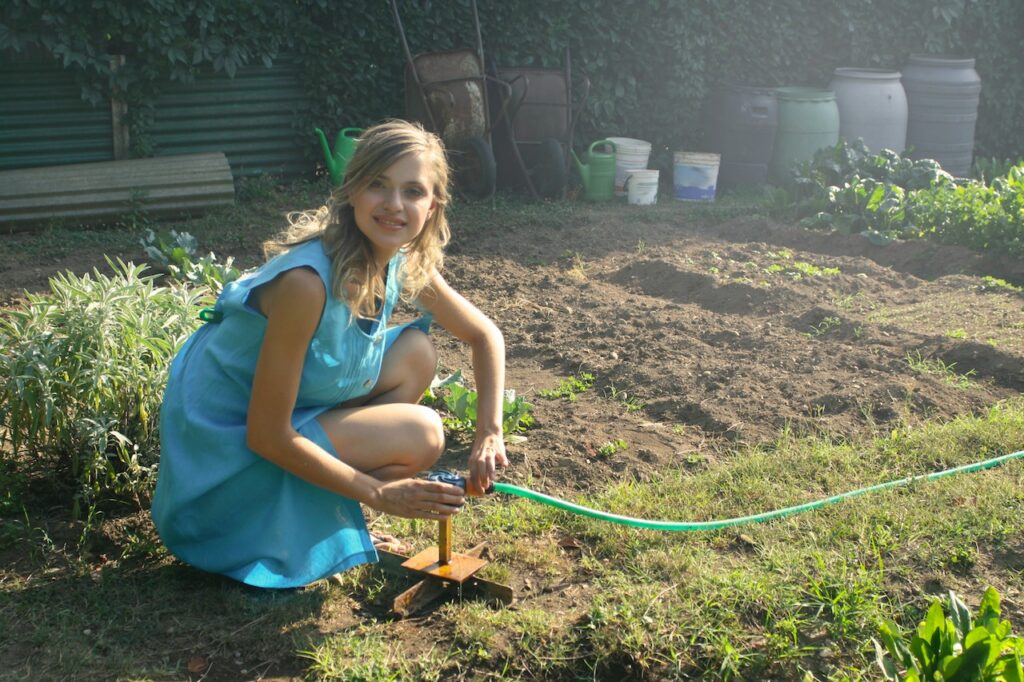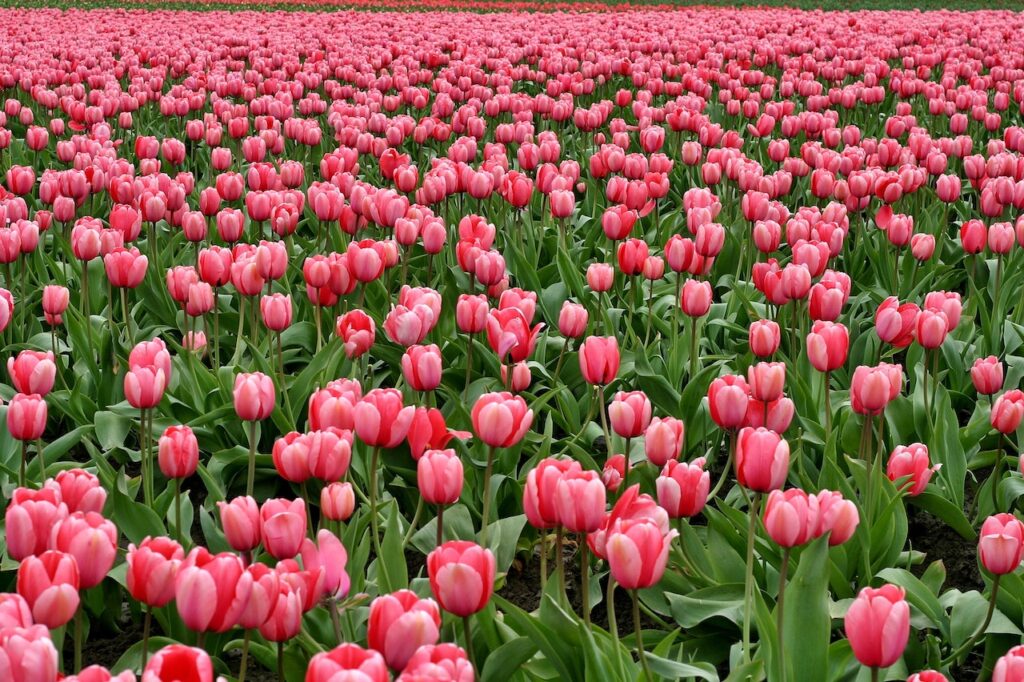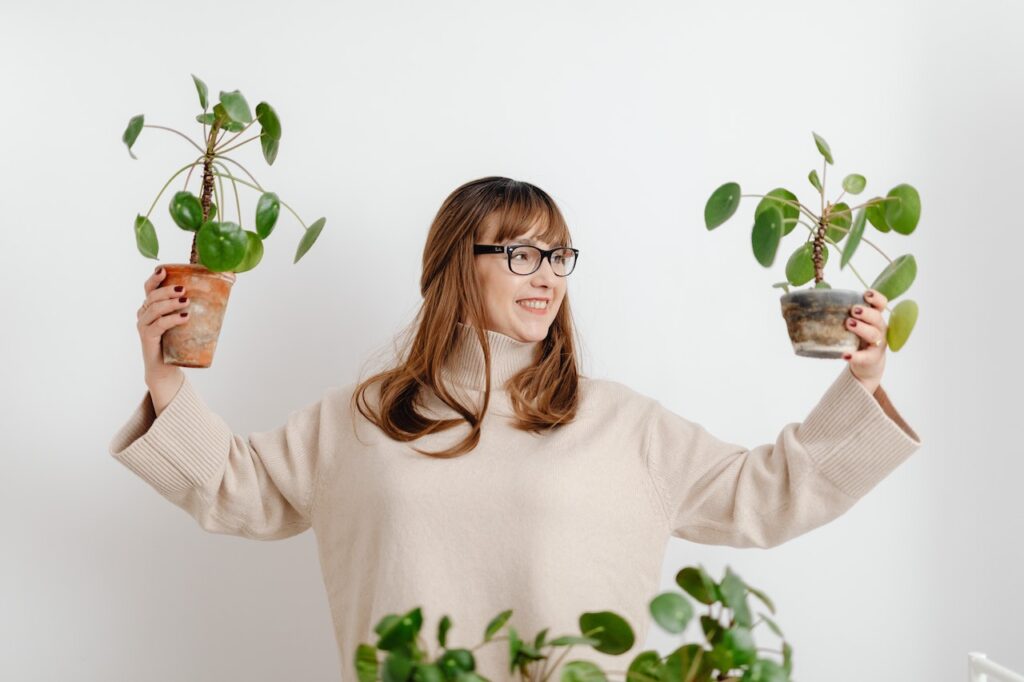Replanting plants from nurseries is an exciting and rewarding endeavor that allows you to bring home a variety of vibrant flora. Whether you’re a seasoned gardener or just starting out, understanding the proper techniques for replanting and caring for your new plants is crucial for their survival and growth. In this article, we will explore a diverse range of plant species commonly found in Indian nurseries and provide essential tips for replanting and nurturing them to thrive in your garden.
Rose Plants:
Roses are perennial favorites in Indian gardens, known for their beauty and fragrance. To replant a rose bush, begin by selecting a healthy specimen from the nursery. Choose a location in your garden that receives at least six hours of direct sunlight. Dig a hole twice the size of the nursery container and carefully remove the plant, taking care not to damage the roots. Place the rose bush in the hole, ensuring the bud union is level with the soil surface. Backfill the hole, gently firming the soil around the roots. Water thoroughly and add a layer of organic mulch around the plant to retain moisture.
Jasmine Plants:
Jasmine, with its delicate white blooms and enchanting fragrance, is a popular choice for Indian gardens. When replanting a jasmine plant, select a well-draining location that receives partial sunlight. Dig a hole slightly larger than the nursery container, gently remove the plant, and loosen the roots if they appear tightly bound. Place the jasmine in the hole, ensuring the soil level matches that of the nursery container. Fill the hole with soil, firming it gently around the roots. Water generously and provide a trellis or support structure for the vine to climb.
Hibiscus Plants:
Hibiscus plants add a tropical touch to gardens with their large, colorful flowers. When replanting a hibiscus, choose a sunny location with well-draining soil. Dig a hole wider than the nursery container and gently remove the plant, being mindful of its delicate roots. Place the hibiscus in the hole, ensuring the top of the root ball is level with or slightly above the soil surface. Backfill the hole, firming the soil gently. Water thoroughly and provide regular watering to keep the soil evenly moist. Mulching can help conserve moisture and suppress weeds.
Money Plants:
Money plants, also known as pothos or devil’s ivy, are popular indoor plants in India due to their attractive foliage and low maintenance requirements. When replanting a money plant, select a pot with good drainage and a well-draining potting mix. Carefully remove the plant from its nursery container and place it in the new pot, ensuring the root ball is centered and at the same level as before. Backfill the pot with soil, gently firming it around the roots. Water thoroughly and place the plant in an area with indirect sunlight.
Curry Leaf Plants:
Curry leaf plants are highly valued in Indian cuisine for their aromatic leaves. When replanting a curry leaf plant, choose a sunny spot in your garden with well-draining soil. Dig a hole wider and deeper than the nursery container and carefully remove the plant, taking care not to disturb the roots. Place the plant in the hole, ensuring it sits at the same level as before. Backfill the hole, firming the soil gently. Water generously and provide regular watering to keep the soil moist. Prune the plant occasionally to promote bushier growth and harvest leaves as needed.
Tulsi (Holy Basil):
Choose a location with well-draining soil, dig a hole slightly larger than the nursery pot, gently remove the plant, and place it in the hole. Backfill with soil, firm it gently, and water thoroughly.
Neem:
Select a sunny spot with well-draining soil. Dig a hole slightly larger than the nursery container, carefully remove the plant, and place it in the hole. Backfill, firm the soil gently, water generously, and mulch around the base.
Marigold:
Choose a sunny location with well-draining soil. Dig a hole slightly larger than the nursery pot, remove the plant, and place it in the hole. Backfill, firm the soil, water thoroughly, and provide regular watering to keep the soil moist.
Aloe Vera:
Select a well-draining pot and use cactus/succulent soil mix. Carefully remove the plant from the nursery container, place it in the pot, and ensure the root ball is centered. Backfill, water thoroughly, and place the plant in a location with bright indirect sunlight.
Orchids:
Select a pot with good drainage and orchid-specific potting mix. Carefully remove the plant from the nursery container, place it in the pot, ensure the roots are spread out, and avoid burying them too deep. Water gently, and place the plant in a location with bright, indirect light.
Bonsai:
Choose a pot with good drainage and a bonsai-specific soil mix. Carefully remove the plant from the nursery container, place it in the pot, and ensure it is centered. Backfill, water gently, and place the bonsai in a suitable location based on its sunlight requirements.
Snake Plant:
Select a well-draining pot and use a succulent/cactus soil mix. Carefully remove the plant from the nursery container, place it in the pot, and ensure the root ball is centered and at the same level as before. Backfill with soil, firm it gently, and water sparingly. Snake plants prefer low to moderate light conditions.
Areca Palm:
Choose a pot with good drainage and use well-draining potting soil. Gently remove the plant from the nursery container and place it in the pot. Ensure the root ball is centered and slightly elevated. Backfill, water thoroughly, and place the palm in a location with bright, indirect sunlight.
Poinsettia:
Select a pot with good drainage and use well-draining potting soil. Carefully remove the plant from the nursery container, place it in the pot, and ensure the root ball is centered. Backfill, water gently, and place the plant in a bright location away from drafts or extreme temperatures.
Geranium:
Choose a pot with drainage holes and use well-draining potting soil. Carefully remove the plant from the nursery container, place it in the pot, and ensure the root ball is centered. Backfill, water thoroughly, and place the geranium in a location with full sun or partial shade.
Spider Plant:
Select a pot with good drainage and use well-draining potting soil. Gently remove the plant from the nursery container, place it in the pot, and ensure the root ball is centered. Backfill, water thoroughly, and place the spider plant in a location with bright, indirect light.
Peace Lily:
Choose a pot with drainage holes and use well-draining potting soil. Carefully remove the plant from the nursery container, place it in the pot, and ensure the root ball is centered. Backfill, water gently, and place the peace lily in a location with bright, indirect light.
Chinese Evergreen:
Select a pot with good drainage and use well-draining potting soil. Gently remove the plant from the nursery container, place it in the pot, and ensure the root ball is centered. Backfill, water gently, and place the Chinese evergreen in a location with bright, indirect light.
Rubber Plant:
Choose a pot with good drainage and use well-draining potting soil. Carefully remove the plant from the nursery container, place it in the pot, and ensure the root ball is centered. Backfill, water gently, and place the rubber plant in a location with bright, indirect light.
Ferns:
Select a pot with good drainage and use well-draining potting soil mixed with peat moss. Carefully remove the plant from the nursery container, place it in the pot, and ensure the root ball is centered. Backfill, water gently, and place the fern in a location with indirect light and high humidity.
Croton:
Choose a pot with good drainage and use well-draining potting soil. Carefully remove the plant from the nursery container, place it in the pot, and ensure the root ball is centered. Backfill, water gently, and place the croton in a location with bright, indirect light.
Coleus:
Select a pot with good drainage and use well-draining potting soil. Gently remove the plant from the nursery container, place it in the pot, and ensure the root ball is centered. Backfill, water thoroughly, and place the coleus in a location with bright, indirect light.
Zinnia:
Choose a sunny location with well-draining soil. Dig a hole slightly larger than the nursery pot, remove the plant, and place it in the hole. Backfill, firm the soil, water thoroughly, and provide regular watering to keep the soil moist.
Dianthus:
Select a location with well-draining soil and full sunlight. Dig a hole slightly larger than the nursery container, gently remove the plant, and place it in the hole. Backfill the hole, firm the soil gently, water thoroughly, and provide regular watering to keep the soil evenly moist.
Bougainvillea:
Choose a sunny location with well-draining soil. Dig a hole wider and deeper than the nursery container, carefully remove the plant, place it in the hole, and ensure the top of the root ball is level with or slightly above the soil surface. Backfill, water thoroughly, and provide regular watering until established.
Petunia:
Select a location with well-draining soil and full sunlight. Dig a hole slightly larger than the nursery pot, gently remove the plant, and place it in the hole. Backfill, firm the soil, water thoroughly, and provide regular watering to keep the soil moist.
Portulaca:
Choose a sunny location with well-draining soil. Dig a hole slightly larger than the nursery container, carefully remove the plant, and place it in the hole. Backfill, firm the soil gently, water thoroughly, and provide regular watering to keep the soil evenly moist.
Vinca (Periwinkle):
Select a location with well-draining soil and full sunlight. Dig a hole slightly larger than the nursery pot, gently remove the plant, and place it in the hole. Backfill, firm the soil, water thoroughly, and provide regular watering to keep the soil moist.
Gerbera Daisy:
Choose a location with well-draining soil and full sunlight. Dig a hole slightly larger than the nursery container, carefully remove the plant, place it in the hole, and ensure the top of the root ball is level with or slightly above the soil surface. Backfill, water thoroughly, and provide regular watering to keep the soil evenly moist.
Pansy:
Select a location with well-draining soil and partial shade. Dig a hole slightly larger than the nursery pot, gently remove the plant, and place it in the hole. Backfill, firm the soil, water thoroughly, and provide regular watering to keep the soil moist.
General Tips for Replanting and Care:
- Water newly replanted plants immediately after planting and maintain regular watering until they establish themselves.
- Apply a layer of organic mulch around the base of the plants to help retain moisture, suppress weeds, and regulate soil temperature.
- Regularly monitor the moisture levels of the soil and water plants accordingly, ensuring they neither dry out nor become waterlogged.
- Fertilize plants at appropriate intervals using organic or slow-release fertilizers to provide essential nutrients for healthy growth.
- Prune plants as needed to maintain their shape, remove dead or diseased parts, and encourage new growth.
- Protect plants from extreme weather conditions, such as strong winds, frost, or intense heat, by providing suitable shelter or covering when necessary.
- Keep an eye out for common pests and diseases that may affect the specific plant species and take appropriate measures, such as using organic pest controls or seeking professional advice if needed.
- Regularly monitor the plants for signs of nutrient deficiencies, pests, or diseases and take prompt action to address any issues.
- Stay knowledgeable about the specific care requirements of each plant species you replant from the nursery, as they may have unique needs that should be catered to.
Conclusion: Replanting plants from nurseries is a wonderful way to enhance your garden with a diverse array of flora. By following proper replanting techniques and providing adequate care and maintenance, you can ensure the healthy growth and longevity of your newly acquired plants. Remember to select the right planting location, provide suitable sunlight and soil conditions, water appropriately, and address any specific care needs for each plant species. With patience, attention, and a little green thumb, you’ll be rewarded with a flourishing garden filled with thriving plants.



